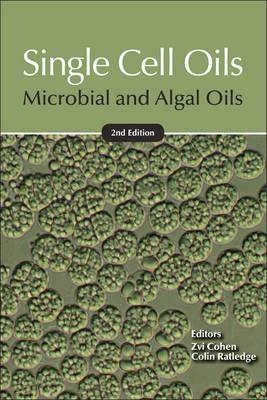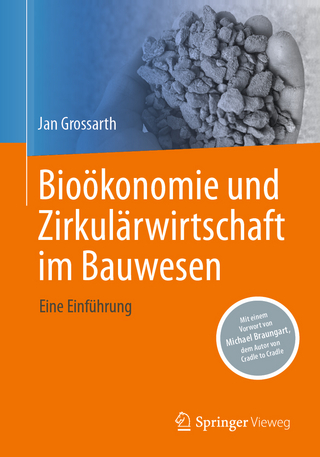
Single Cell Oils
AOCS (Verlag)
978-1-893997-73-8 (ISBN)
- Keine Verlagsinformationen verfügbar
- Artikel merken
The highlight of the book is perhaps the first chapter in which Colin Ratledge, a world renowned expert in SCO and lipid biochemistry, gives an interesting and informative overview on the history of SCO development, together with his perspectives on the future of this industry in light of competition arising from genetically modified plant oils. Zvi Cohen, a renowned expert in PUFA-producing microalgae, describes some of his metabolic studies on PUFA production and TAG biosynthesis. Chapter 10 deals with EPA-producing microalgae and some cultivation strategies for their large scale production. This chapter includes a number of tables summarizing the various organisms under investigation which I found to be of great use. Since the development of EPA single cell oils is still in its infancy, this chapter is quite helpful for researchers thinking along those lines.
Professor Zvi Cohen received hs PhD from the Weizmann Institute of Science in 1978. He is a member of the Blaustein Institute of Desert Research in Ben Gurion University since 1981 and is the incumbent of the Maks and Rochelle Etingin professorial chair in Desert Research. His research involves the physiology, biochemistry, molecular biology and biotechnology of PUFA production in microalgae. Professor Cohen serves on the editorial board of Annals of Microbiology and Biotechnology Letters, is the editor of Chemicals from Microalgae and coeditor (with Colin Ratledge) of Single Cell Oils. After gaining his PhD from Manchester University and a four-year spell as a post-doc in Trinity College, Dublin, Colin joined Unilever at their research laboratories at Colworth House in the UK. It was here that he was introduced to the pleasures of working with microbial lipids and of trying to produce something commercially useful out of them. However, the plug was pulled on the project and Colin decided to return to the safer environment of academic research and joined the teaching staff of the Department of Biochemistry at the University of Hull in 1967. And here he has spent the rest of his career, being promoted through the ranks until he was given a personal professorial chair in 1983. Colin's research work with microbial lipids began to take off when he realised that nothing was known, in biochemical terms, as to how some microorganism were able to produce copious amounts of lipid in their cells whilst others completely failed to do so. Work on the biochemistry of lipid accumulation in yeasts and fungi was the main focus of much of the research that was carried out at Hull. Work that was helped by many research students, post-docs and dedicated technicians plus government and EU grants and considerable support from industry who began to take increasing interests as to what microorganisms might be able to achieve in the way of producing desirable edible oils. It was during this time that the terms were coined of 'Single Cell Oils' and also 'oleaginous microorganisms', both of which seem to have been accepted as part of the glossary of lipids. The very first commercial single cell oil was produced in 1985 as a result of research work carried out at Hull; this was an oil rich in ?-linolenic acid (GLA) being produced by the fungus, Mucor circinelloides. The large-scale process was developed by J & E Sturge at Selby, North Yorkshire, using their expertise with fungi as they were major producers of citric acid using Aspergillus niger. Production was at the 220 m3 level and, when production ceased in 1990, some 50 tons of GLA-SCO had been produced, all used for human consumption. His work has been recognised by the receipt of several awards, including the highly prestigious Stephen Chang Award from AOCS in 2011. He has been visiting professor at a number of universities including National University of Malaysia, Polytechnic University Hong Kong, Ben Gurion University Israel and Jiangnan University, China. Colin's research work continued to explore the finer details of lipid biosynthesis and accumulation in both yeasts and fungi gradually building up a reasonable, but by no means complete, picture as to what was going on in the oleaginous microorganisms to allow them to accumulate so much lipid. In all, he has published over 300 scientific papers and reviews plus being writer and editor of 18 books. Colin officially retired in 2004 but has continued to be active in research and also with various editing roles including being Associate Editor for Lipids, editorial advisor for Lipid Technology and Editor in Chief of Biotechnology Letters. He also continues to be a consultant for a number of companies involved in various aspects of SCO production. Dept of Microbial Biochemistry, University of Hull, Hull HU6 7RX, U.K.
1. Single Cell Oils for the 21st Century
2. Arachidonic Acid-Producing Mortierella alpina: Creation of Mutants and Molecular Breeding
3. Development of a Docosahexaenoic Acid Production Technology Using Schizochytrium: A Historical Perspective
4. Searching for PUFA-Rich Microalgae
5. Arachidonic Acid: Fermentative Production by Mortierella Fungi
6. Production of Single Cell Oils by Dinoflagellates
7. Production of Docosahexaenoic Acid by the Marine Microalga, Ulkenia sp.
8. Alternative Carbon Sources for Heterotrophic Production of Docosahexaenoic Acid by the Marine Alga Crypthecodinium cohnii
9. Carotenoid Production Using Microorganisms
10. Prospects for Eicosapentaenoic Acid Production Using Microorganisms
11. Safety Evaluation of Single Cell Oils and the Regulatory Requirements for Use as Food Ingredients
12. Nutritional Aspects of Single Cell Oils: Uses and Applications of Arachidonic Acid and Docosahexaenoic Acid Oils
13. Down-Stream Processing, Extraction, and Purification of Single Cell Oils
14. Supercritical Fluid Extraction of Lipids and Other Materials from Algae
15. The Future Development of Single Cell Oils
| Erscheint lt. Verlag | 23.10.2015 |
|---|---|
| Verlagsort | IL |
| Sprache | englisch |
| Maße | 152 x 229 mm |
| Gewicht | 700 g |
| Themenwelt | Naturwissenschaften ► Biologie ► Ökologie / Naturschutz |
| Technik ► Elektrotechnik / Energietechnik | |
| Technik ► Lebensmitteltechnologie | |
| ISBN-10 | 1-893997-73-1 / 1893997731 |
| ISBN-13 | 978-1-893997-73-8 / 9781893997738 |
| Zustand | Neuware |
| Haben Sie eine Frage zum Produkt? |
aus dem Bereich


